Longing for serenity and greenery, I chose to spend my summer holidays cycling in Estonia. In this practical bicycle touring guide, I’ll share insights and tips to help organise a two-wheeled adventure along the Estonian coastline. Saddle up and get ready to explore the islands, forests and amazing campsites!
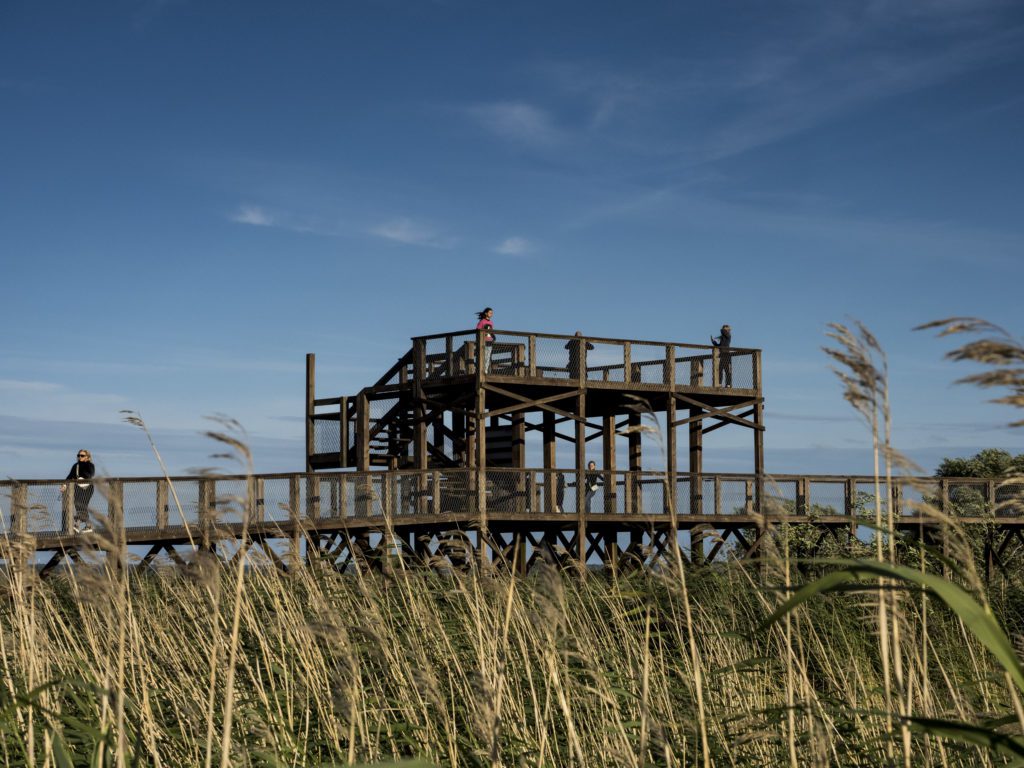
How to get there
Bus
I took a LuxExpress bus from Warsaw to Pärnu (on the Warsaw-Tallin route). It took 12 hours, and the ticket cost 45 euros. Taking your bicycle is free of charge, but you need to add a bicycle ticket to your reservation. You cannot board with your bike at the Warsaw Central Station, so I had to depart from Warsaw Zachodnia. There is space for four bicycles on the bus. The journey was very comfortable, and my bike travelled safely in a separate compartment.
An alternative is a Flixbus from Warsaw to Tallinn (the ticket price is similar or slightly higher, and the buses are less comfortable).
Train
Estonia isn’t currently connected to the rest of Europe by rail. The Rail Baltica project—the railway between Warsaw and Tallinn—is still ongoing and scheduled for 2030.
Plane
If you live in the UK, you can very cheaply travel to Tallinn by plane, as both WizzAir and RyanAir have connections between London and the Estonian capital.
Flying with AirBaltic via Riga is usually the easiest and cheapest from elsewhere in Europe.
Ferry
The ferry from Helsinki to Tallinn runs multiple times a day. The trip takes slightly more than two hours, and the ticket for a passenger with a bicycle costs 28 to 68 euros.
Bicycle rental in Estonia
Velo Market bike rental in Tallinn offers a wide selection of rental bicycles: city, gravel, trekking and e-bikes. Prices start from 15 euros per day.
Terrain
If you hate biking uphill, you’ll love cycling in Estonia. It is one of the flattest countries in the world, and its highest point, Suur Munamägi (Egg Mountain), is 318 m.
The coast and the islands are incredibly flat – on my first day of cycling in Estonia, I rode over 108 kilometres with only 135 metres of elevation gain!
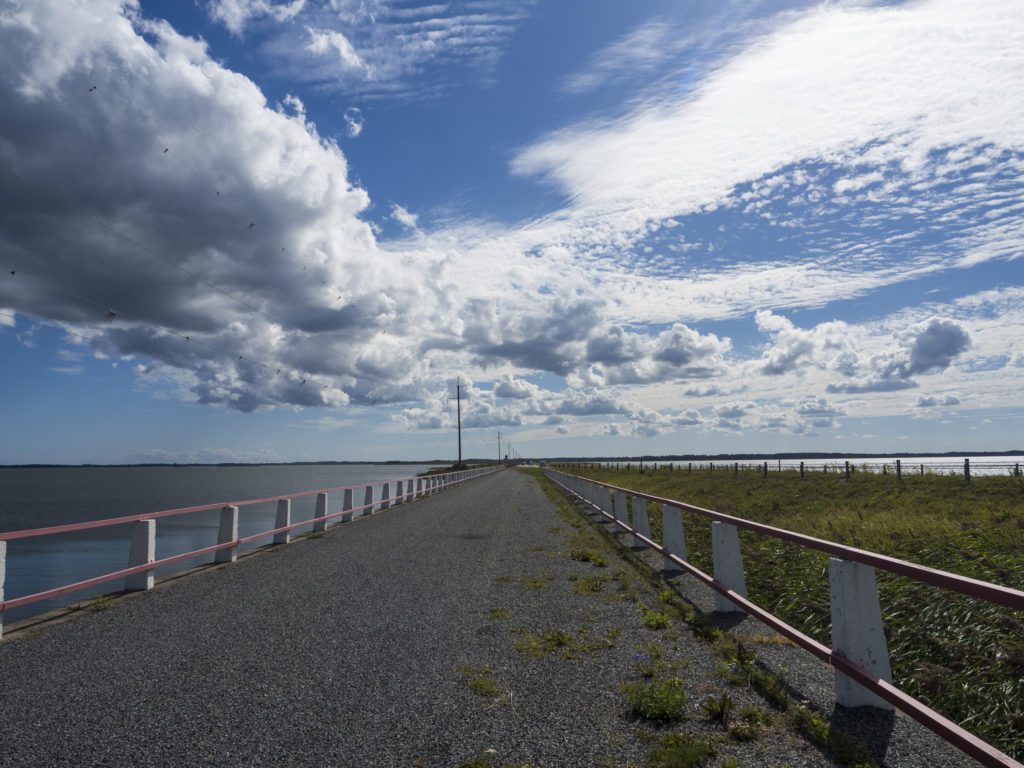
Roads and traffic
Estonia is one of Europe’s least densely populated countries, meaning there are many empty roads with very little traffic. The cycling infrastructure is inconsistent – sometimes, you’ll find amazing segregated bicycle lanes, and sometimes, you’ll end up on a busy road with barely any shoulder, even if you follow the Eurovelo routes.
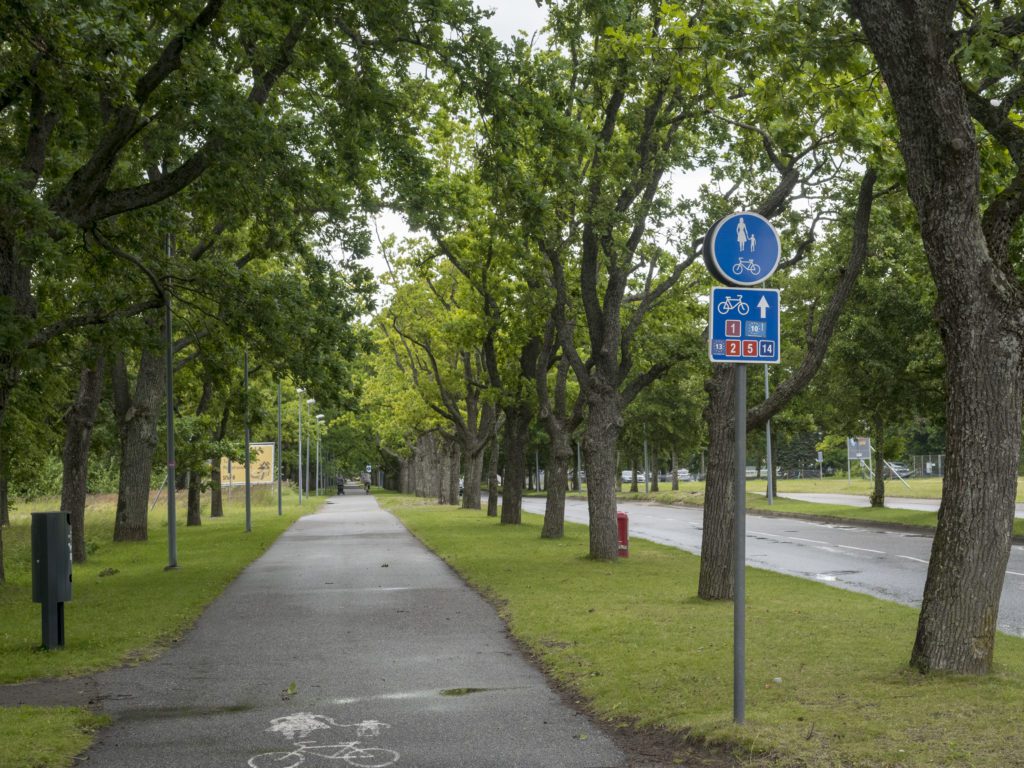
The drivers are mostly considerate, but I had a few situations where truck drivers overtook me without maintaining a safe distance.
Best cycling routes in Estonia
Eurovelo 10 (Baltic Sea Route) and Eurovelo 13 (Iron Curtain Trail)
Most cycle travellers in Estonia follow the Eurovelo 10 and 13 routes (which greatly overlap in Estonia). It is a great idea, as they’ll take you to some of the most stunning places on the Estonian coast and the islands of Saaremaa and Hiiumaa.
They are mostly flat, which makes them perfect for everyone new to cycle touring.
The cycling infrastructure along the Estonian Eurovelo routes is decent yet far from perfect. For example, a 15-kilometre stretch of the route from Paldiski to Tallinn follows a busy motorway with plenty of trucks.
Cycleways in Estonia
If you’re looking for alternative cycling routes in Estonia, check out this list of Estonian cycleways.
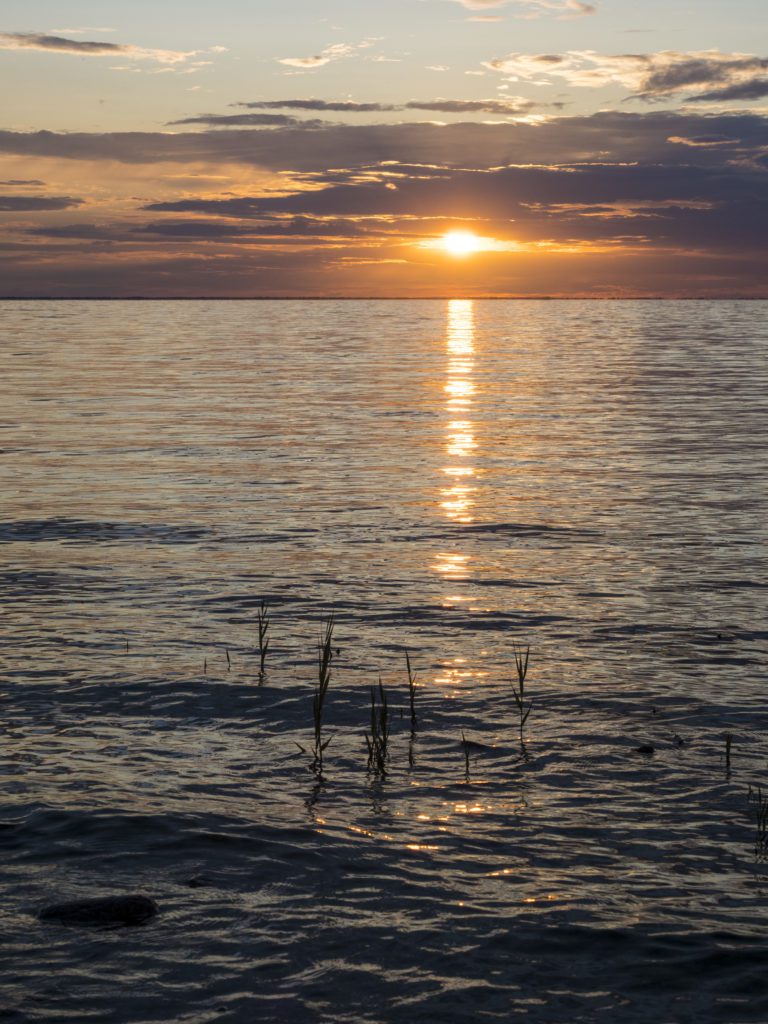
Ferry to Saaremaa and Hiiumaa
Cycling the Estonian coast without visiting the beautiful islands is like visiting Switzerland without tasting the cheese.
Pedalling through charming villages, lush forests, and stunning coastlines of Muhu, Saaremaa, and Hiiumaa was the highlight of my trip. These sparsely populated islands are also terrific for wild camping, with plenty of scenic spots or hidden corners where you’ll be waken up by the birds.
You should save at least two days for cycling the islands.
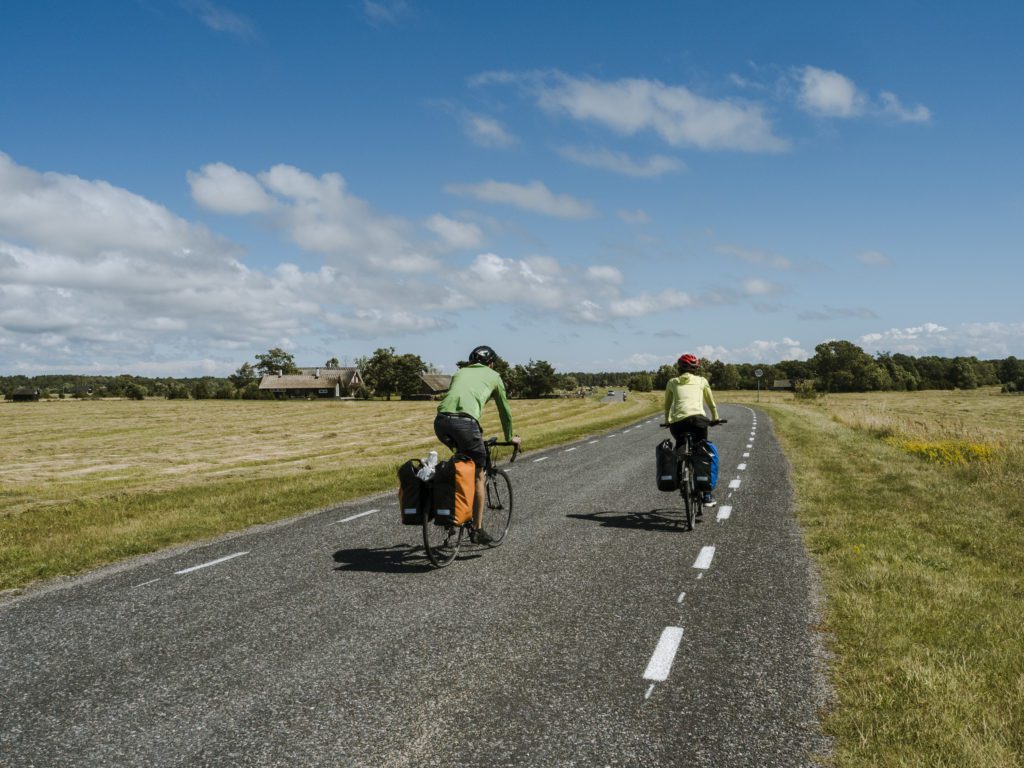
Ferry from the mainland to Saaremaa
The islands are accessible by ferry. To reach Saaremaa from the mainland, you must take a ferry from Virtsu to Kuivastu and cross the bridge connecting the island of Muhu with Saaremaa. The trip takes less than half an hour, with two departures per hour. You can find the timetable here. I paid 4,20 euros for a ticket with the bicycle. You can buy the tickets online or at the harbour (line up with cars to the ticket booth).
Ferry from Saaremaa to Hiiumaa
I did a proper Estonian island hopping and headed straight from Saaremaa to Hiiumaa. The ferry between Triigi and Sõru sails only four times a day in the peak season and twice a day outside of the summer season, so don’t forget to check the timetable and plan your route to arrive at the terminal on time.
You can buy the tickets at the vending machines in the port. A passenger ticket costs 3 euros and a bicycle ticket costs 1,20 euros.
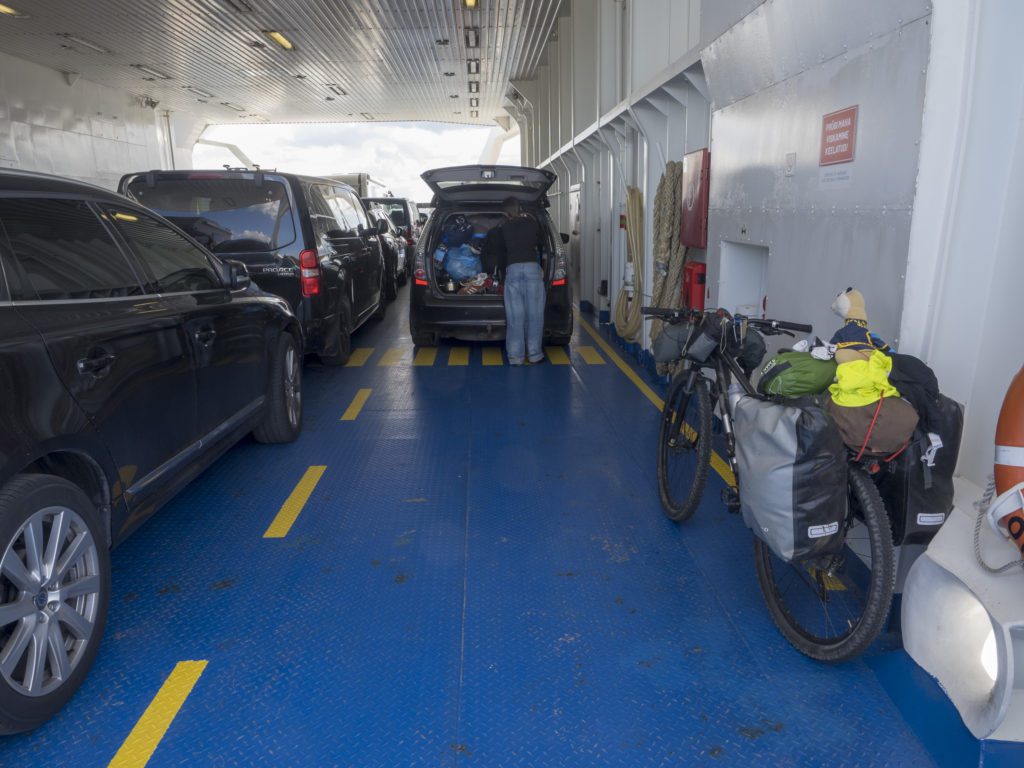
The ferry crossing takes about one hour.
Ferry between the mainland and Hiiumaa
In the high season, the ferry from Heltermaa to Rohukula runs every 90 minutes. The timetable is available here. The crossing takes about 1 hour and 15 minutes. I paid 3,40 euros for the ticket with my bike. You can buy it at the cash register in the port.
Taking a bicycle on a train in Estonia
Estonia’s train network is well-developed, and the main carrier, Elron, makes bringing a bicycle on the train easy. Most trains are low-floored and have wide doors that make it easy to board with a bike, even without taking off the panniers.
In the summer season (from April to the end of October), you need to buy a bicycle ticket. The price depends on the route and is 50 % of the total ticket price. You can buy the ticket online or on board. By booking, the website shows you how many bicycle spaces are available on a specific train, and if you book a seat, you are guaranteed that your bike will travel with you.
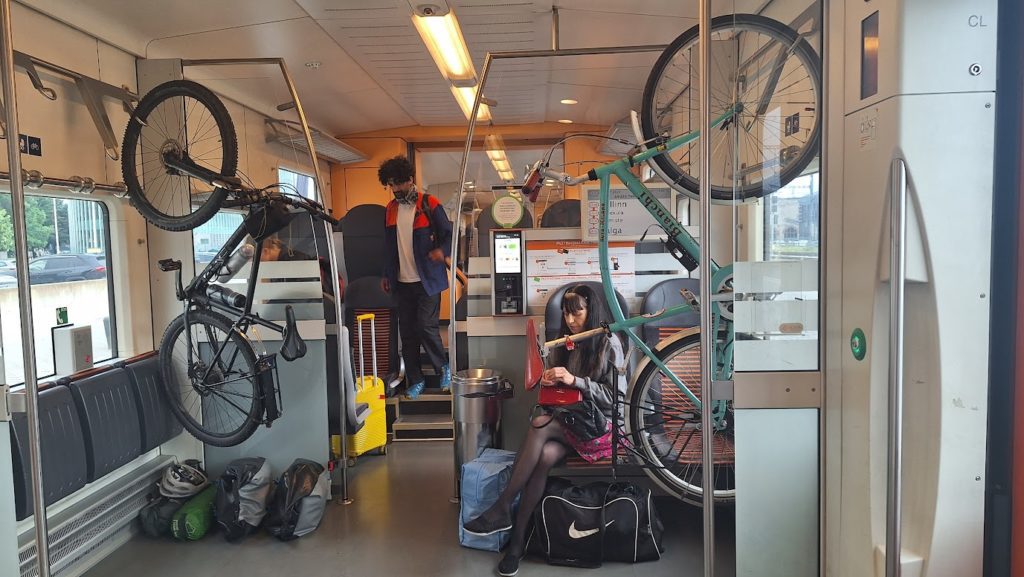
In the low season, you can bring your bike on Estonian trains free of charge. A packed folding bike is also free to bring.
The weather
Estonia is a perfect destination for a summer bicycle tour. It’s warm, but the cold breeze from the Baltic Sea makes it pleasant even when the rest of Europe is melting because of a heatwave. The summer days are also very long—in June and July, you can start looking for a camp spot around 10 pm, and it still won’t be dark!
Estonia is located in the humid zone, so don’t forget good rain gear.
Cycling in Estonia – packing list
Here are a few essentials you cannot forget to pack for your cycling tour in Estonia:
- Mosquito repellent – the forests and marshes are a perfect environment for mosquitoes, ticks and other insects. Pick the strongest mosquito repellent you can possibly find to protect yourself from the bites.
- After-bite gel or antihistamine cream. Even though I was diligent and frequently used my mosquito repellent, I didn’t avoid the bites. Luckily, I had a small after-bite roll that helped relieve the itching.
- Tick removal tool.
- Rain jacket.
- Camping gear.
Camping in Estonia
Estonia is a paradise for camping. Wild camping is easy and safe, and established campsites are affordable and beautifully located. If you have always wanted to try camping on your cycling tour but were afraid to, Estonia is the perfect place to do it!
Wild camping in Estonia is legal, except on private land, national parks, or military areas. The RMK mobile app is very useful for finding great camping spots and hiking trails. The RMK campsites usually have space for a couple of tents, benches, tables, fireplaces, and a pit toilet (on one of them, there was even a solar USB-charger in the toilet!).
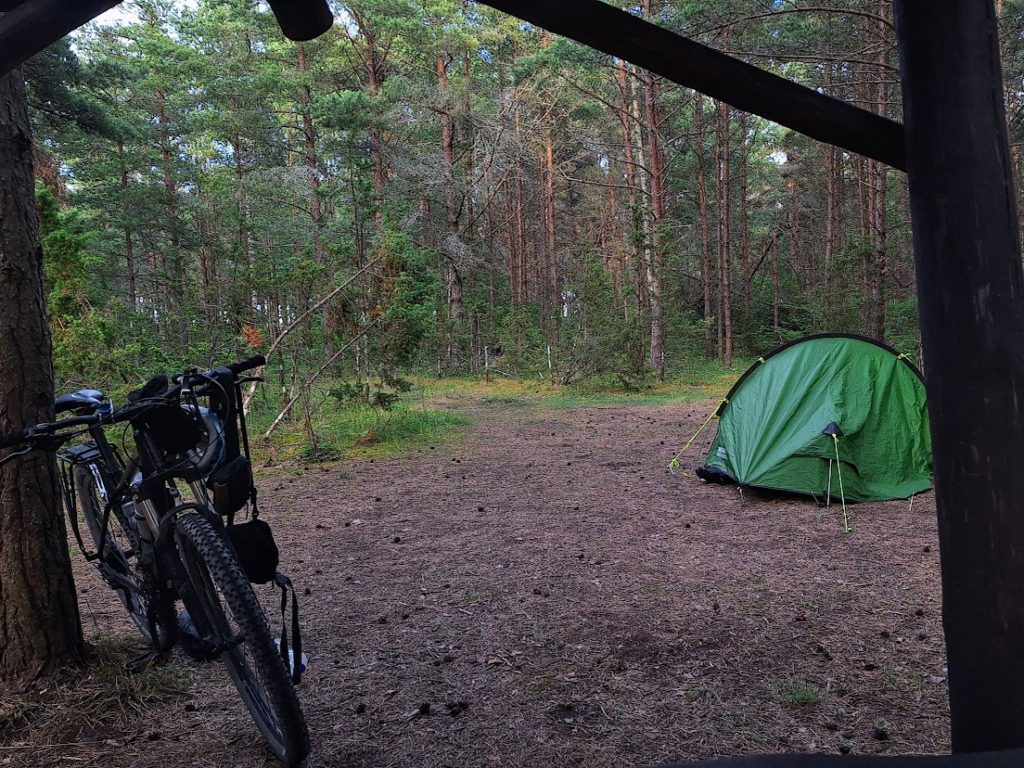
If you prefer having a shower after a day of cycling, there are plenty of campsites on the Estonian coast and the islands. They are very affordable: I never paid more than 10 euros per night. Most of them are well-equipped and have a kitchen, so you don’t have to carry cooking gear!
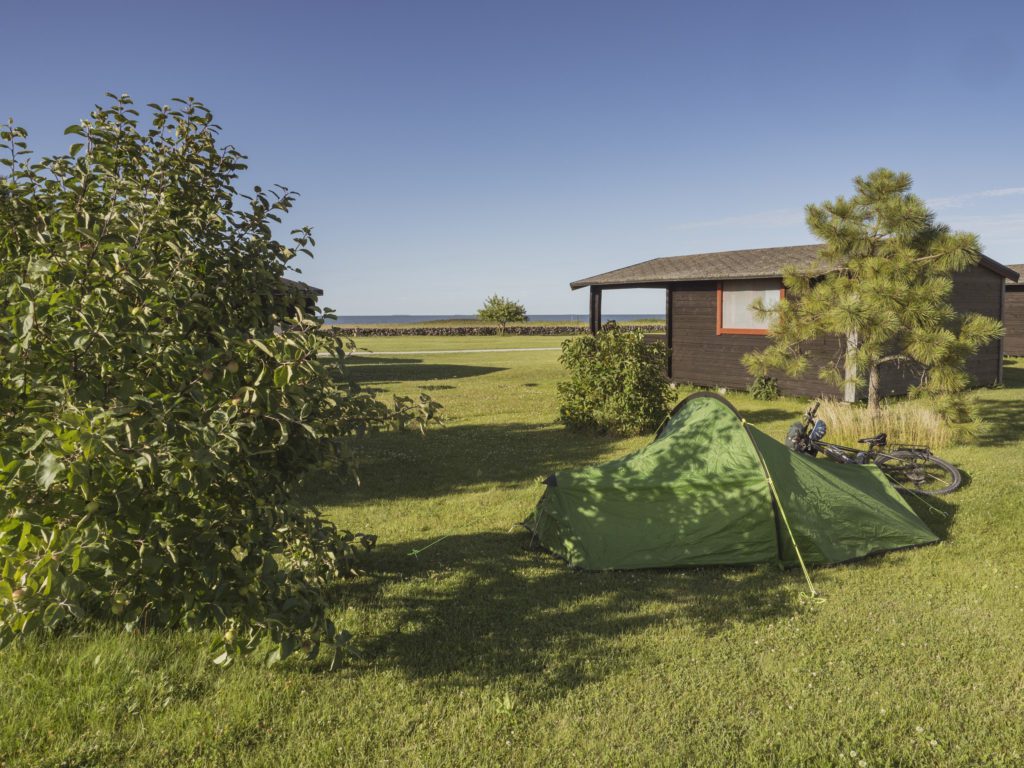
Accommodation
If you prefer a comfy bed and don’t feel like carrying camping gear, you can find plenty of hotels and B&Bs in the coastal tourist resorts. My only night not camping was in Tallinn, and I paid around 35 euros for a single room with a bathroom. I used booking.com to find the accommodation.
Money
Estonia is a part of the Eurozone. As a digitalized nation, you can pay by card almost everywhere (I even found a contactless card terminal in one of the public toilets!). You will only need cash if you’re staying at campsites.
For groceries, restaurants, and accommodation, prices are usually lower than in Western Europe.
Internet and SIM card
If you have a SIM card from another EU country, you can use the mobile network in Estonia, like at home.
If you don’t have one, getting an eSIM card is best. For example, Yesim offers 5GB, valid for 15 days for 12 euros.
If Estonia is just a part of your cycle tour around Europe, the best choice will be to get a Eurolink eSIM card with Airalo (for example, a 50 GB card valid for 90 days costs 100 USD).
Cycling Estonian Coast – What to see?
Here are some of my personal highlights from my cycle route along the Estonian Coast:
Pärnu
Pärnu is a charming coastal resort with a peaceful green park where you must see the iconic green statues of elephants. In the summer, the town is bustling with cultural events. There are also plenty of restaurants and bars with tasty food.
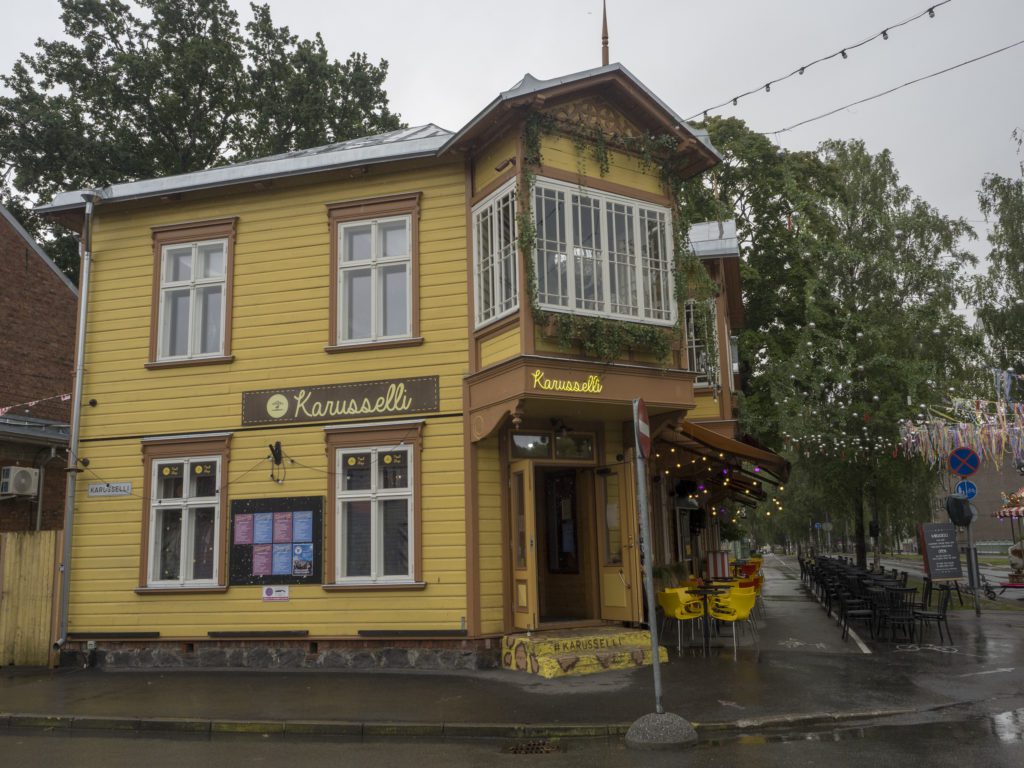
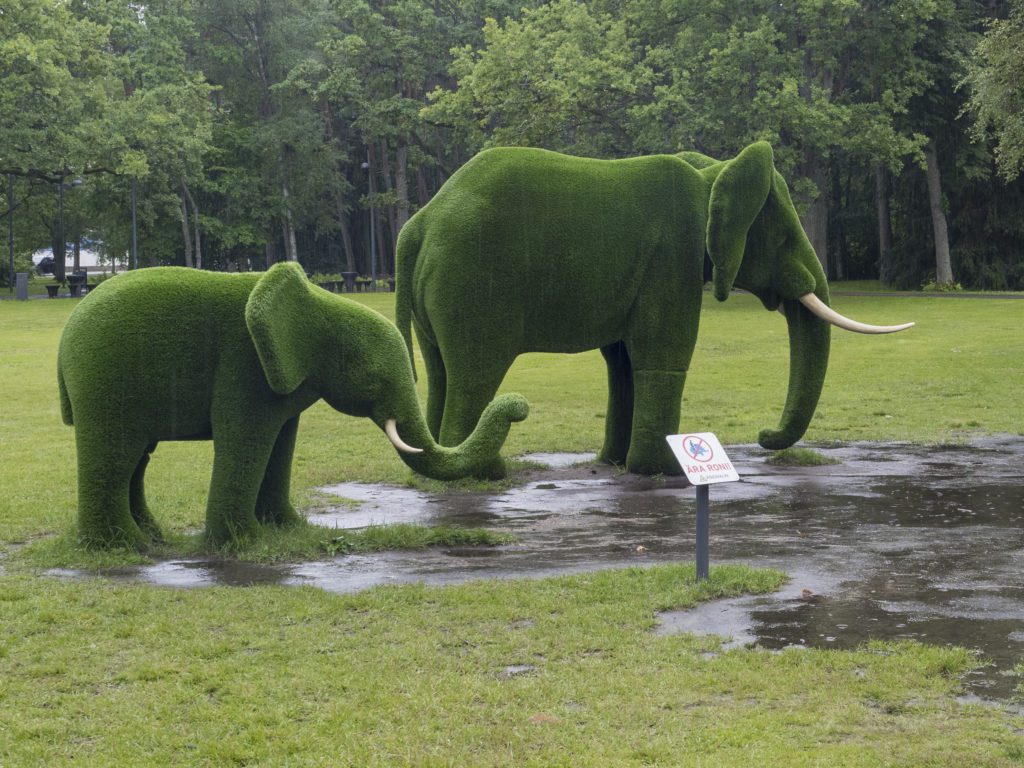
Sääre tirp
Sääre tirp is a scenic peninsula on the island of Hiiumaa. While cycling to the very tip of the peninsula is quite difficult (even thick mountain bike tyres struggle on the pebbles), the view is absolutely worth the effort! On my way there, I encountered a flock of horses, adding an even more romantic vibe to the impressive landscape.
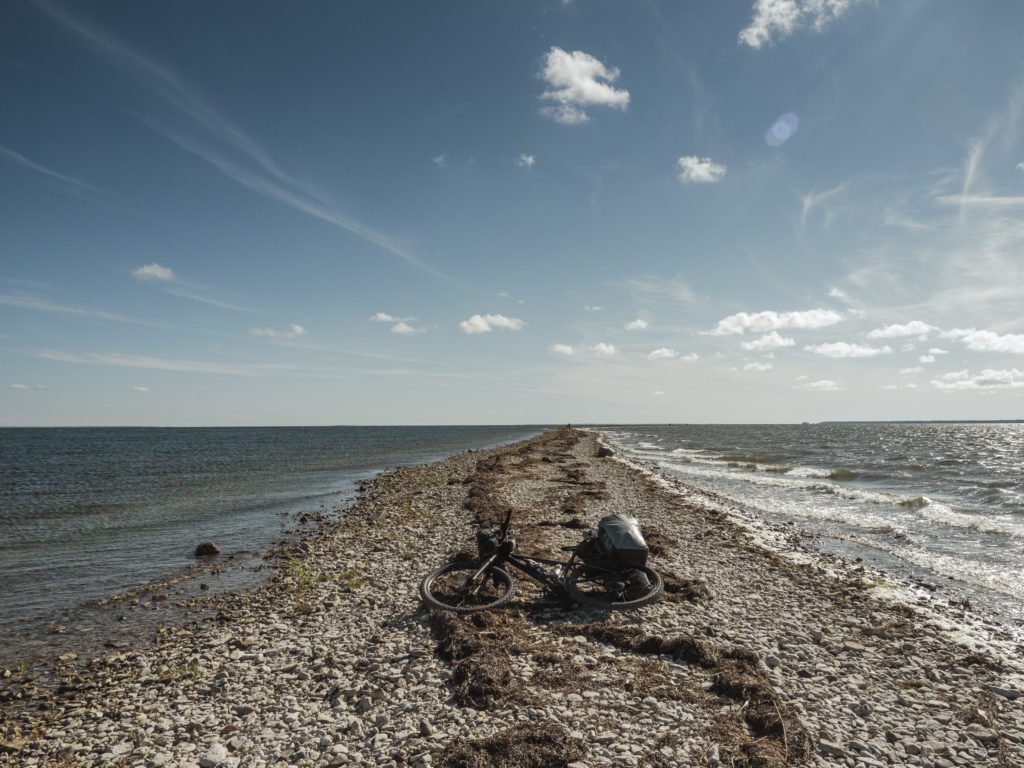
You can even stay the night at the RMK campsite near the Sääre trip.
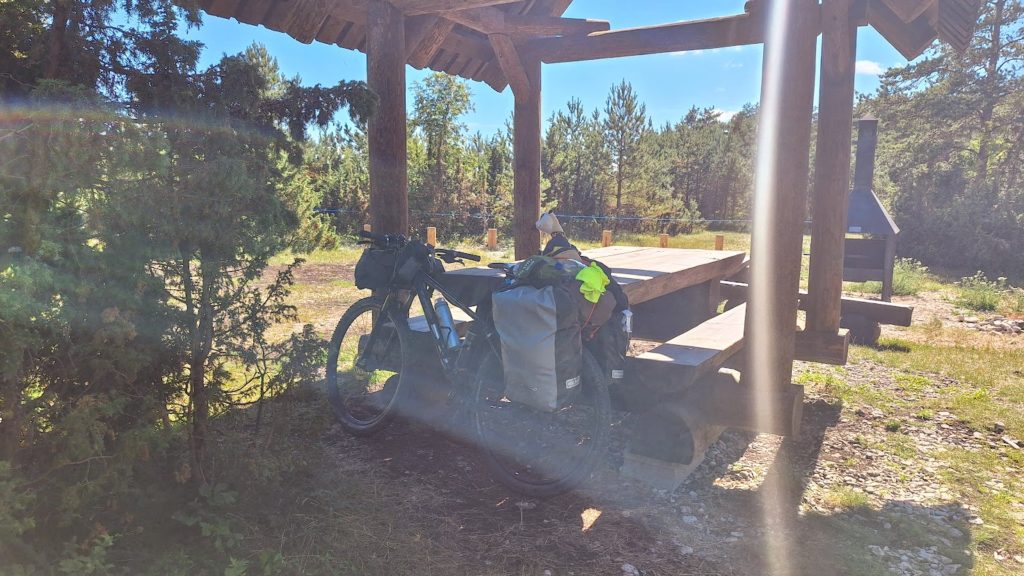
The old quarry in Rummu
The most picturesque spot of my trip (that’s where the featured image for this post comes from) was certainly the old quarry in Rummu, with beautiful limestone hills and turquoise water. The entry costs 6 euros, and the lake with the submerged prison building is a popular spot for swimming, SUP boards and diving.
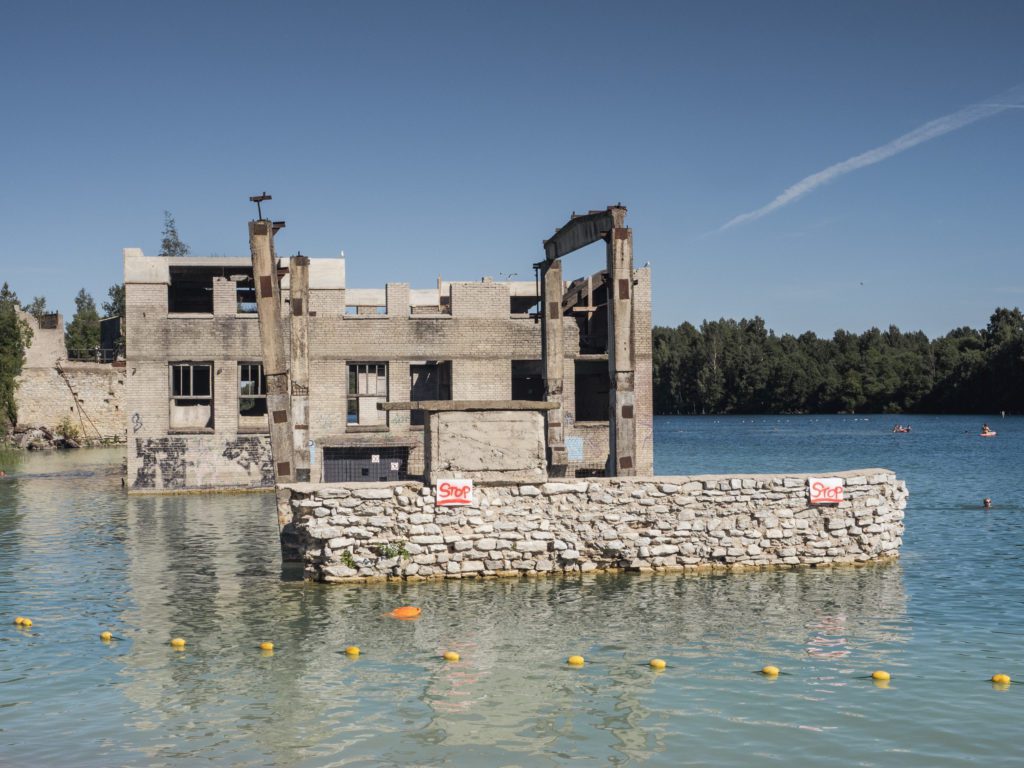
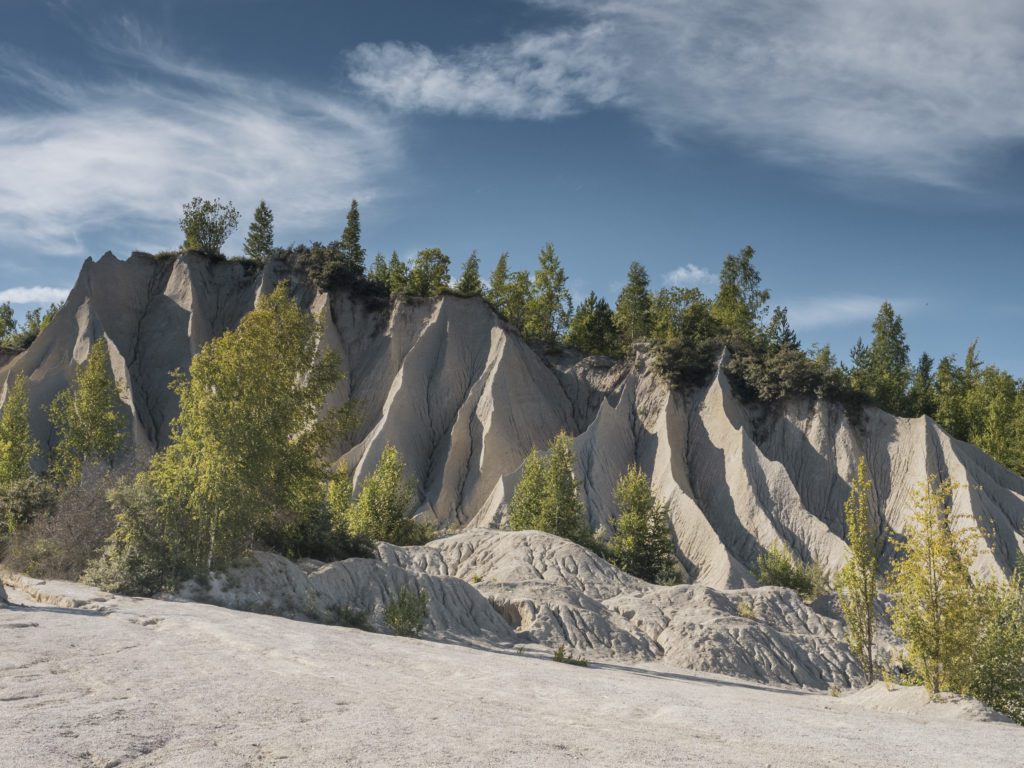
Near Rummu, you can stay at a beautiful campsite in Kallaste Talu, where you can enjoy the company of rabbits, goats and geese. I paid just 7,50 euros for a beautiful pitch by the river.
Keila waterfall
A six-metre-high Keila waterfall is the third largest waterfall in Estonia. It might not be the most overwhelming waterfall I’ve seen, but it’s certainly very charming.
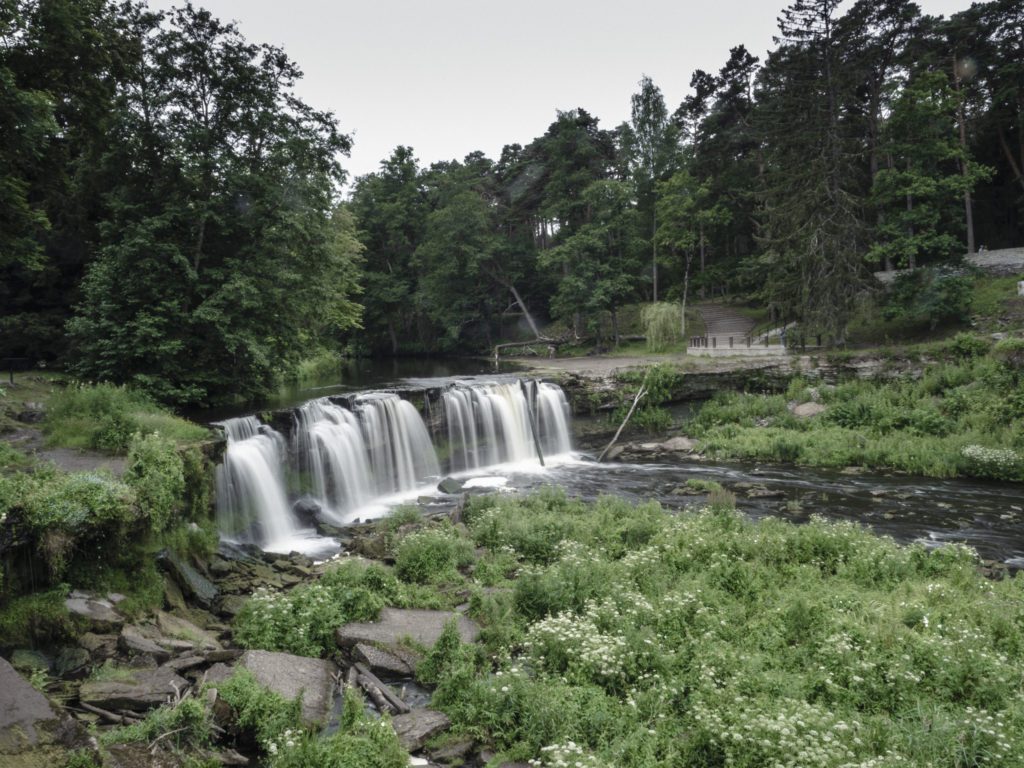
The Old Town of Tallinn
Tallinn is one of the most beautiful cities I’ve ever visited, with the Old Town preserving the 13th-century structure. Walking on the medieval defensive walls and strolling along the small enchanting streets has been a highlight of my trip, despite the pouring rain that welcomed me to Estonia’s capital.
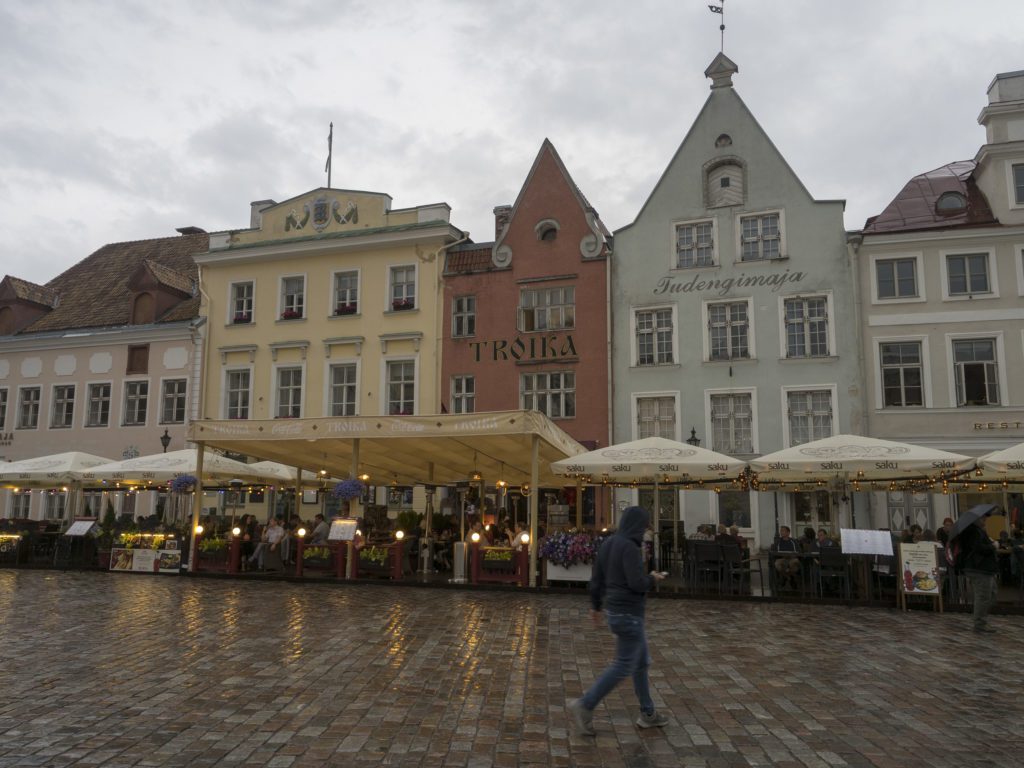
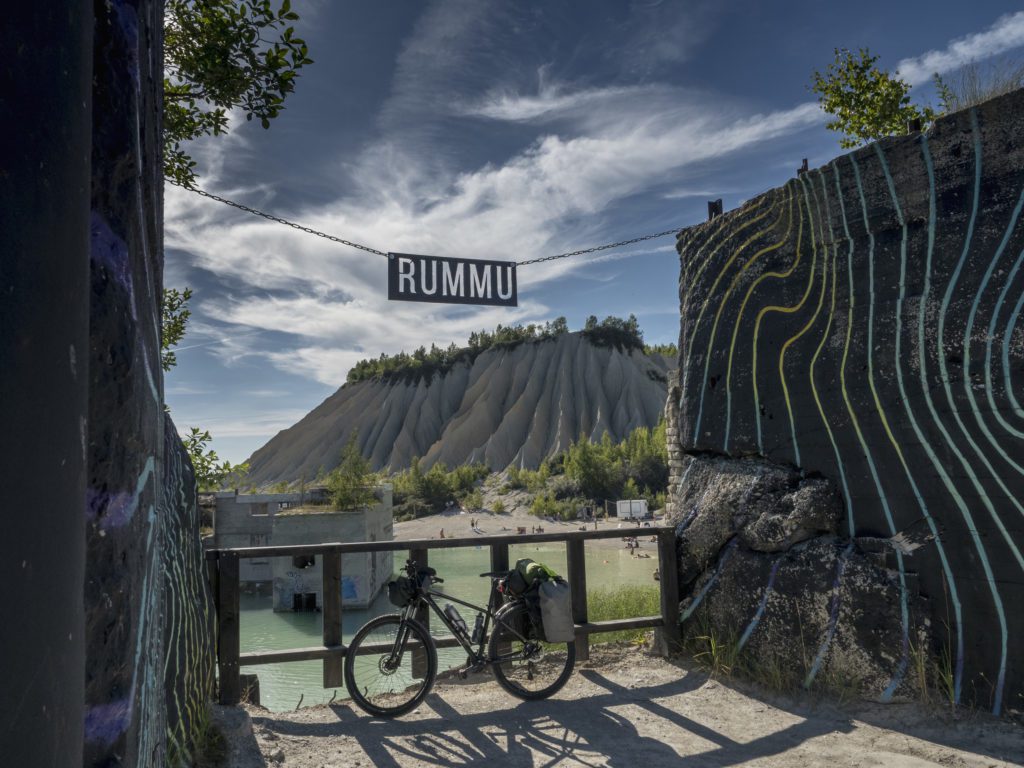
Hi Joanna, My wife and I have enjoyed your summaries of cycling in Estonia, Latvia and Poland. You write excellent summaries of the information that cycle tourers are looking for. We are experienced cyclists looking at a 2 month trip in that region (probably mid-June to mid August). We will start in Gdansk because we have a friend there, but do you think that we would have a more interesting trip doing a loop in Poland, or cycling up through the Baltics to fly back from Tallinn? A difficult question I know, but we would be very interested in your opinion. Thank you for taking the time to respond.
Hi Gord, thank you for your nice comment! It is a difficult question indeed 😉
It depends what you’re looking for, I guess. Cycling through the Baltics will give you a more diverse cultural experience, as you’ll be cycling across four countries. The Baltics are beautiful and peaceful, with a lot of forests and lakes and there’s plenty of historical sites along the way as well.
But Poland itself has plenty to offer as well and you can experience many different landscapes. There is an amazing cycle route in the east, Green Velo, where you’ll have plenty of nature. In the south, you can find beautiful mountains (Google the Velo Dunajec, Szlak Orlich Gniazd and Szlak Rowerowy Dookoła Tatr to check what amazing cycle routes you can find there). Gdansk and the coast are absolutely stunning too, consider cycling the Vistula Spit, it has fantastic sandy beaches and a lot of nature!
Thank you very much Joanna. At this point we are leaning toward a loop in Poland, which we are very excited about. Perhaps we will do the other trip next year. Thank you as well for the link to Veloplanner. It is my wife’s new favourite trip planning tool.